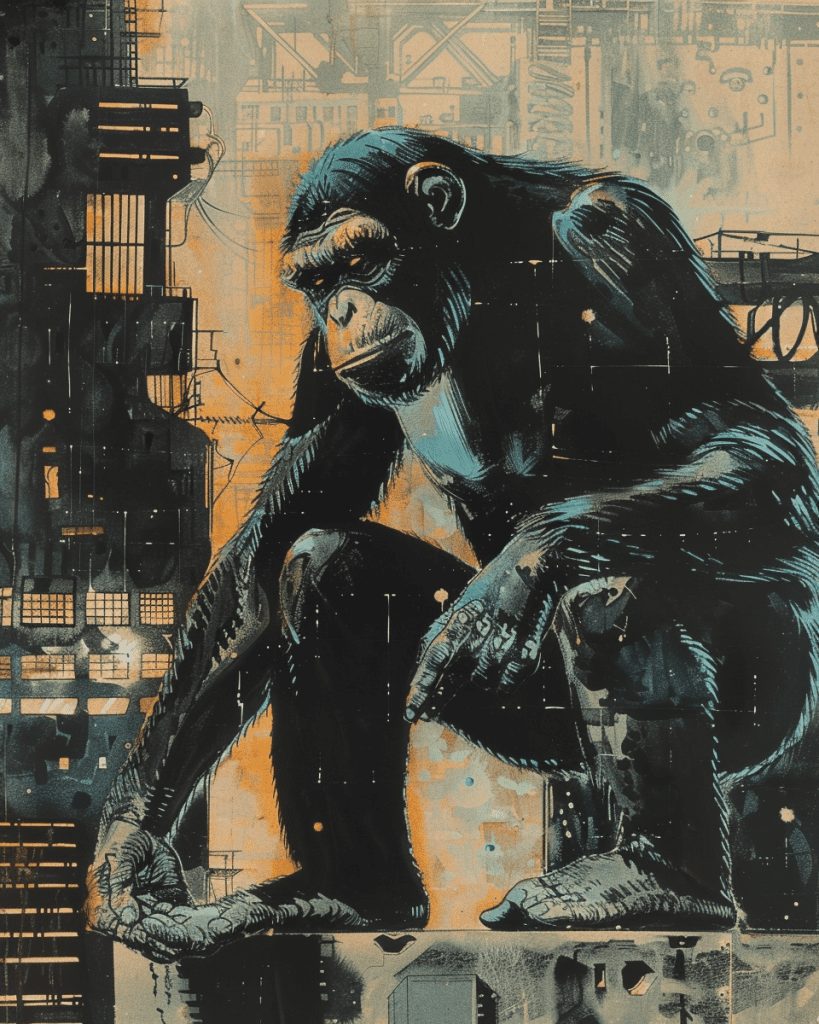Humanzee, a term made famous in the 1970s, is the name given to a theoretical human-ape hybrid. And although there have been no scientifically verified specimens, how theoretical is it? Evidence exists that researchers have undertaken experiments to make such a hybrid. And according to some scientists, they have been at least partially successful.
It begins in Russia
Ilya Ivanovich Ivanov was a Russian and Soviet biologist born in 1870. He specialized in work around artificial insemination and hybridization of animal species. His early work regarding horses resulted in artificial insemination techniques still used today.
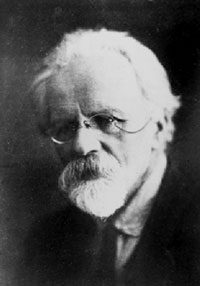
In 1910, Ivanov gave a presentation at the International Congress of Zoologists in Graz. He stated his belief that it would be possible to create a human-chimp crossbreed through artificial insemination techniques.
What is less apparent is why? The Russian scientist believed a humanzee (not a term he would have used as they did not coin this until later) would be a huge scientific breakthrough. But this seems to be yet another example of scientists wondering if they can do something without considering if they should.
Zedonks and other curiosities
Ivanov’s fascination with hybrid animals led him to experiment on several different possibilities. Popular science has attributed successful hybrids to Ivanov, including a cow and an antelope and a cow and a bison. But the best name of these hybrids has to be a Zedonk, a hybrid donkey-zebra.
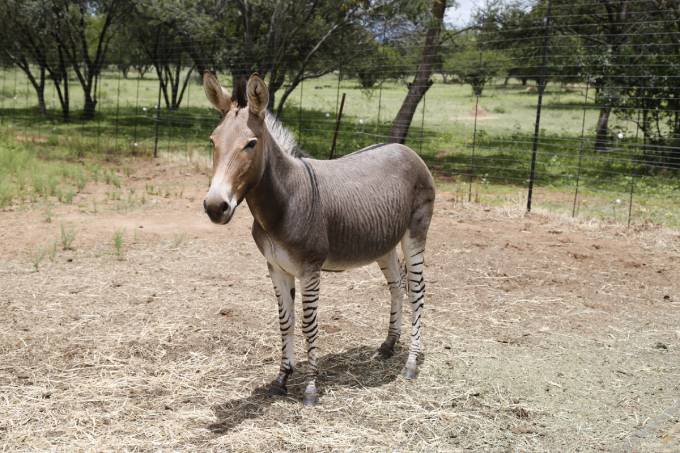
The Russian Revolution brings possibilities
Stalin’s Soviet government had no place for religion, and in the 1920s, it was actively looking at ways to reinforce the superiority of this doctrine. Ivanov realized that the political landscape might enable his humanzee research, and he applied for funding.
The French authorities allowed him access to their primate research center in French Guinea (he previously worked with the Pasteur Institute in Paris). And together with Russian Government funding, he was ready.
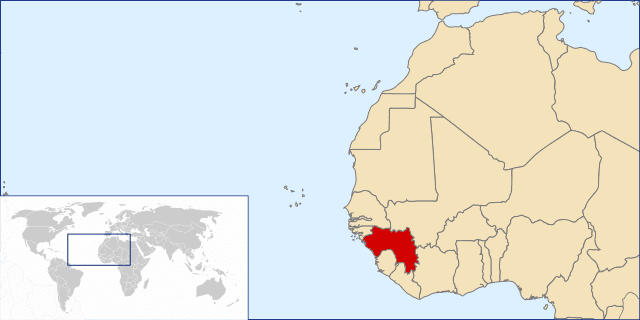
Ivanov immediately hit a problem on arrival at the research station in Kindia, French Guinea (modern-day Guinea, West Africa). The facility had no mature female chimpanzees with which he could experiment (which shows even weird science isn’t exempt from Murphy’s law). After some back and forth, Ivanov eventually secured an agreement to use the botanical gardens of Conakry, French Guinea, for his humanzee experiment research.
If at first, you don’t succeed, go weirder
During his time in French Guinea, Ivanov inseminated three adult chimpanzees with human sperm. None of the attempts resulted in pregnancy. He left Guinea and returned to France with thirteen chimpanzees. These he then shipped on to Sukhumi (modern-day Georgia) in the Soviet Union.
Ivanov’s failures did not dishearten him. Instead, he decided that greater success would be had by inseminating human females with chimpanzee sperm. The French colonial administration in Guinea blocked these plans. So Ivanov returned to the Soviet Union to continue his twisted scheme.
The Soviet scientist set about planning and organizing the experiment. With the help of certain parts of the Russian scientific community, everything was set for 1929. Ivanov is said to have found five volunteer women for his experiment. Given this was Russia in 1929, a certain skepticism to how voluntary these ‘human volunteers’ were is probably valid.
Fickle Russian favor
Luckily, (although not for the chimp in question) the only sexually active male chimp at the Sukhumi research center died before Ivanov could begin insemination.
A new batch of chimps was destined to arrive during the summer of 1930. Unfortunately for Ivanov, he was among many scientists caught up in a political purge. Ivanov was arrested and sent into exile, where he died from a stroke two years later. And thus, the first attempts to create a humanzee failed.
Humanzee myths
There have been numerous foretellings of humanzee hybrids throughout history. Most of which bear no relation to truth. In an 11th century religious work by St. Peter Damian, there is a story of a humanzee. Count Gulielmus owned a pet ape. The ape had a thing for the Count’s wife. It became jealous of seeing the Count and his wife lying together and killed him.
According to the story, Pope Alexander II told St. Peter Damian this while showing him a humanzee called Maimo that was supposed to be the result of the wife and the ape sleeping together.
Nazi terror
Another recurring rumor comes from World War II and the Nazi ‘Angel of Death,’ Josef Mengele. He would tell female prisoners in Auschwitz that he had impregnated them with the sperm from chimpanzees.

There is no proof that this was true, and it is probably unlikely as it would not have served any purpose for his supposed eugenics ‘research.’ It was more likely a form of psychological torture from a madman.
Scientific rumor
In the 20th century, rumors occasionally surfaced of other scientific attempts at humanzees. Numerous reports reference an attempt in China during the 1960s. Here, a chimpanzee was rumored to have been impregnated by human semen. Depending on the account, the chimp died after the scientists experimenting abandoned it, or a mob killed it during the Chinese cultural revolution. Either way, the chimp never gave birth to the hybrid.
Another fascinating account comes from Gordon Gallup, a well-known US evolutionary psychologist. Gallup claims he was told about a successful humanzee hybrid bred in a lab in Florida during the 1920s. The Orange Park facility was the first primate research center established (later the Yerkes National Primate Research Center). Gallup says he knew a former university professor who claimed to have worked there during the experiments.
Whether such an experiment did take place is the subject of debate. According to Gallup, the attempt resulted in the impregnation of a female chimpanzee with human sperm and successful birth. The humanzee survived for some days before the scientists responsible suddenly had an attack of moral and ethical considerations and euthanized the hybrid.
Oliver
Oliver is one of the most persistent causes of the humanzee myth, and the likely source of the term humanzee itself. Oliver was a chimpanzee from the Congo who was acquired by monkey trainers Frank and Janet Berger.
Based on specific facts, the Bergers came to believe Oliver might not have been a simple chimp but a human-chimpanzee hybrid. Oliver liked to walk bipedally. He had a flatter face than other chimps, and they believed he was attracted to human females and not chimpanzees.
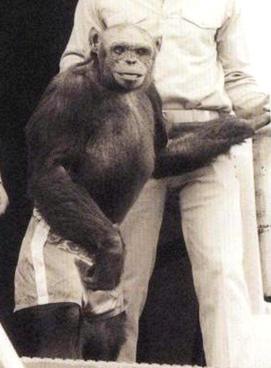
Oliver did not have a happy life. The Bergers sold him on, and he became an attraction at a small theme park. Here he was exhibited as a strange curiosity for many years. Several media outlets did pieces on Oliver, including a large LA Times splash discussing Oliver as the missing link.
He was eventually bought by the Buckshire Corporation, which hired out animals for testing. He spent many years in a cage, developing muscular atrophy and arthritis. During his time here, the University of Chicago genetically tested Oliver. They finally put to bed the rumors of a humanzee by proving he had the standard 48 chromosomes of a chimp and not the hybrid 47 or even the 46 of a human.
The source of the word, if not the myth
Oliver’s persistent and extensive media interest during the 1970s and 80s saw the birth of the word humanzee and coined its widespread usage. Oliver might not have been a humanzee, but he was the first to be labeled as such.
What does science say?
Chimpanzees and humans are closely related and share 98.4% of their DNA. But that similarity is not the only thing required. There are many hurdles to jump before a successful hybrid would develop. Fertilization and development is a massively complex process, and even in species with similar matches to human-chimp, problems occur. A similar chromosomal similarity occurs within horses and donkeys, but almost all offspring are sterile.
Research has discovered that human spermatozoa can penetrate gibbon eggs, which would likely occur for chimps. Modern genetic research has also suggested that after chimps and our human ancestors split into distinct evolutionary lines, there was intermingling between the two for some time afterward.
But, for now, science still does not have any direct evidence that a half-human half-ape has ever existed.

